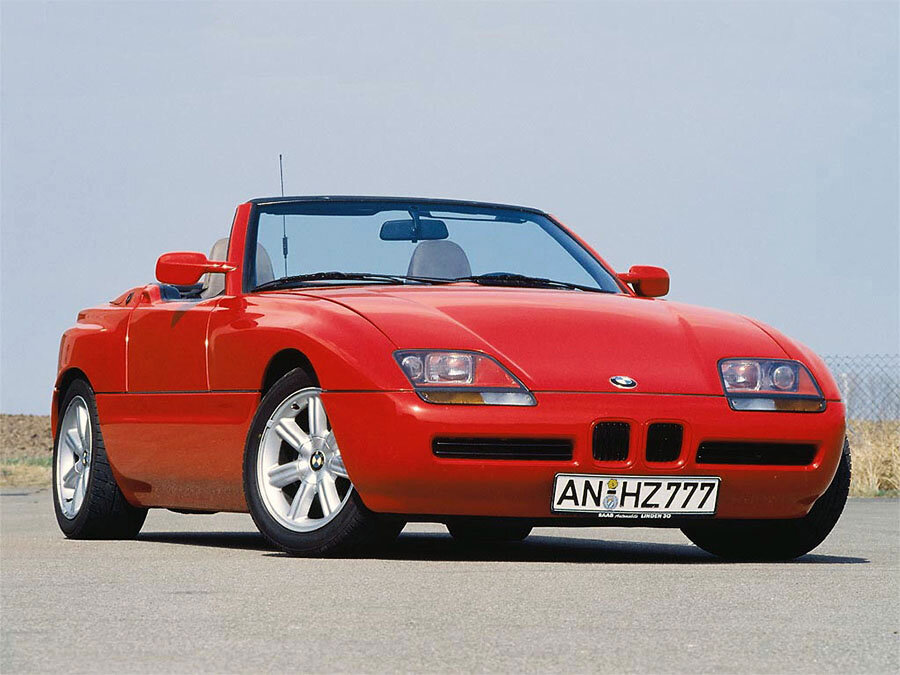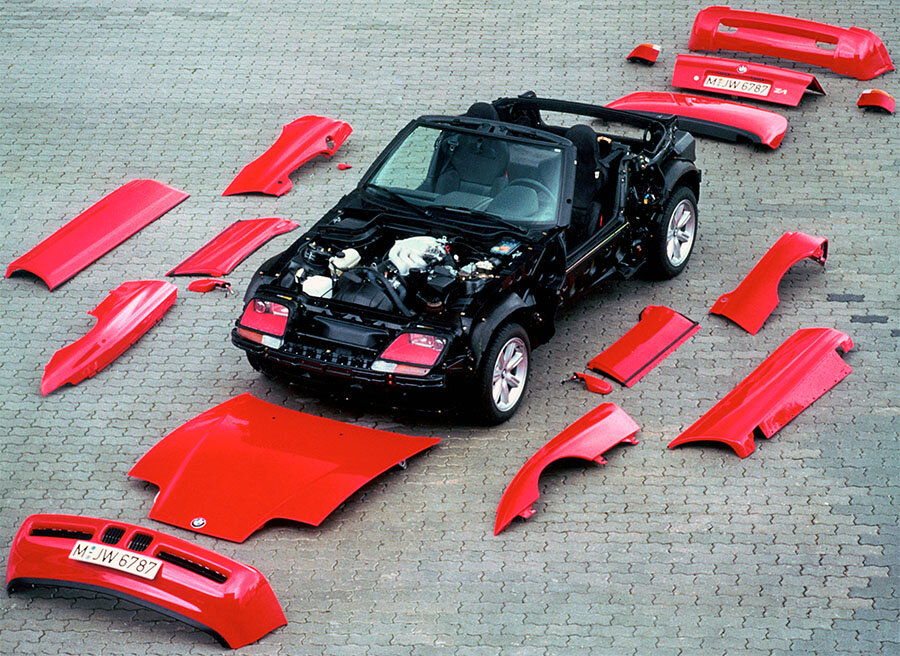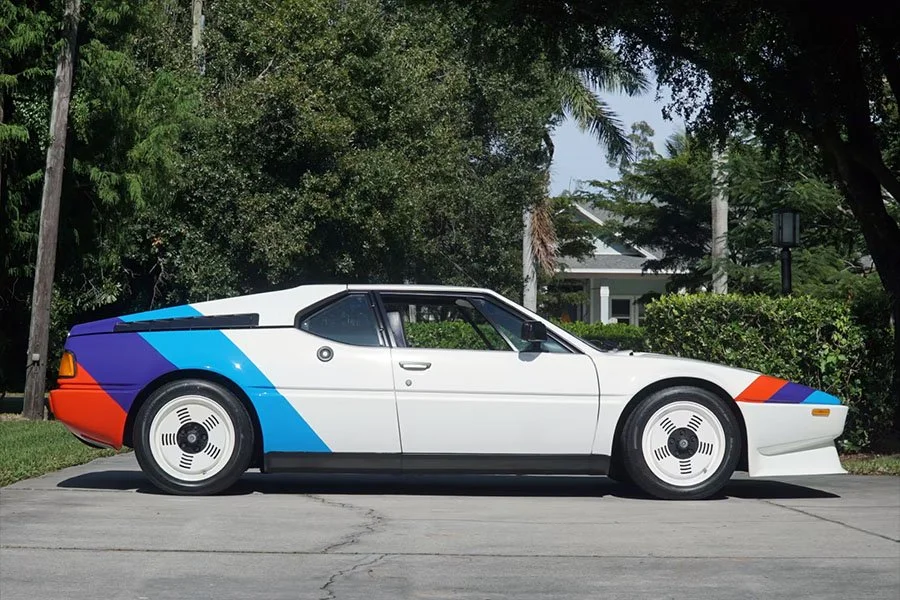Guide: BMW Z1 - a Historical & Technical Appraisal
/BACKGROUND
By the mid 1980s, BMW was on the crest of a wave following two decades of exponential growth.
Thanks to a combination of superbly engineered and handsomely styled models that offered class-leading performance, reliability and build quality, the Munich firm had become a global leader in the mid-size and executive class market.
Motor racing also played a significant role in raising the company’s international profile and, while Mercedes-Benz sat on the sidelines, BMW’s competition exploits helped establish the company as the manufacturer of choice for customers that wanted a high performance edge to their prestige automobile.
One of the key models that catapulted BMW to global prominence was the aspirational Boyke Boyer-styled E30 3-series launched in November 1982. A replacement for the already highly successful E21 3-series, the E30 moved BMW up to another level and became the most sought after compact class vehicle of its generation.
During the first two full years of production, BMW sold over half a million E30s in four-door Saloon and two-door Coupe trim. A Convertible then came on stream during 1985, at which point BMW began to consider the production of something a little bit special using the well-proven E30 mechanicals.
The same year as the E30 Convertible arrived, BMW Technik was established to design and develop avant-garde concepts for new vehicles and technologies.
The 60 strong team’s first creation was a light weight, compact, front-mid engined two-seat roadster using the aforementioned E30 running gear.
The last time BMW had offered an open two seater was between 1956 and 1959 when the legendary 507 was in production. However, on that occasion the company was nearly bankrupted as a result of higher than anticipated production costs.
BMW Technik was given the green light to proceed with what became the Z1 concept in August 1985. Z stood for Zukunft, the German word for future.
One year later, the first road-going Z1 prototype had been completed and BMW management were so impressed they immediately sanctioned a production run.
The Z1 was subsequently unveiled at the Frankfurt Motor Show in September 1987 where it debuted alongside the E30 3-series Touring and the E38 750i (which was powered by Germany’s first post-war twelve cylinder engine).
Production started at BMW’s Munich plant in October 1988. By this time, amid a surging market for high end collector cars and low volume specials, the company had already taken over 4000 pre orders.
CHASSIS
The Z1 was assembled around a steel monocoque with a 2447mm wheelbase. Hot-dipping the chassis in zinc resulted in a 25% stiffer assembly which was particularly beneficial around the panel seams and joint overlaps.
A composite plastic floor weighed just 15kg. It was bonded and bolted to the frame. A 58-litre fuel tank was located under the trunk floor.
MacPherson strut front suspension was lifted from E30 325i. At the rear was a unique ‘Z axle’ multi-link arrangement with two transverse control arms and one longitudinal control arm.
Bilstein coil over dampers were installed at each corner while anti-squat and anti-dive geometry endowed the Z1 with go kart-like handling.
The front brake arrangement with its 260mm ventilated discs was also lifted from the E30. At the rear, the E30’s solid 258mm discs were switched to bigger 280mm components. ABS was standard.
Handsome 15 x 7-inch light alloy wheels were created specially for the Z1 and normally came shod with Pirelli P700 tyres (225/45 ZR 16).
Track was 53mm narrower than the 325i at the front and 56mm wider at the rear.
ENGINE / TRANSMISSION
In the engine bay was BMW’s iron block 2.5-litre Type M20 B25 straight six.
Aside from being canted at 20° to allow a lower nose profile, the only modification was a new sump to clear the front axle. The light alloy head featured a single belt-driven overhead camshaft and two valves per cylinder.
Displacement was 2494cc thanks to a bore and stroke of 84mm and 75mm respectively.
Engine management came courtesy of Bosch ME 1.3 Motronic. A three-way catalyst and Lambda sensor controlled emissions.
Compression was 8.8:1 which yielded a peak output of 170bhp at 5800rpm and 164lb-ft at 4300rpm.
Transmission was through a five-speed Getrag 260/5 manual gearbox (with custom rear torque tube mounting), a single-plate clutch and open differential.
BODYWORK
The Z1’s body was made up of removable injection-moulded thermoplastic panels to which special Varioflex paint was applied.
The side panels and doors were fabricated by GE Xenoy, the bonnet, boot and roof cover by Seger + Hoffman.
Undoubtedly the Z1’s most talked about feature was its vertical sliding doors which dropped into oversized sills that offered independent crash protection.
To keep the doors as light as possible, all the electric and mechanical components were integrated within the car’s body. The doors took around 4.5 seconds to open and 6.5 seconds to close. The side windows automatically retracted if the doors were lowered. Manual override was possible for emergencies.
Unlike most sports cars of the period, BMW designer Harm Lagaay opted for covered rather than retractable headlights (one of the reasons the Z1 still looks fresh today).
Deformable body panels allowed for a design free of ugly bumper appendages.
Short front and rear overhangs gave the Z1 a compact look while a flat undertray smoothed airflow to the ground effect rear bumper complete with its lift-reducing diffuser and exhaust shroud.
INTERIOR
Apart from some of the instrumentation and switchgear, the Z1’s interior was completely new.
The dash featured a small curved binnacle that housed a 240kmh or 150mph speedo along with a 7000rpm rev counter. These primary dials were flanked by a smaller gauges for fuel and water temperature.
Ventilation controls and the audio system were positioned in a central control panel that adjoined the transmission tunnel. As there was not enough space for a heater and refrigeration unit, air-conditioning was not offered.
A special three-spoke steering wheel was unique to the Z1.
The dash, centre console, gear gaitor and sills were upholstered in leather. Door panels and seats were a mix of leather and fabric or leather and Nubuck.
Recaro bucket seats came with body coloured backrests.
Electric windows, mirrors and doors were standard.
WEIGHT / PERFORMANCE
Curb weight was 1250kg (5kg less than a manual gearbox 325i Convertible).
BMW quoted a top speed of 141mph (up from 135mph) and a 0-62mph time of 7.9 seconds (down from 8.4 seconds). However, these figures belied the Z1’s true character; its agility and instantaneous throttle response made it an extremely enjoyable car to drive.
OPTIONS
Initially only four colours were available: Top Red (3102 built), Dream Black Metallic (2301 built), UR Green Metallic (2041 built) and Fun Yellow (135 built). Magic Violet Metallic (228 built) and Pur Blue Metallic (193 built) were also subsequently offered.
There were four upholstery options as well.
The most popular was velvet-like Dark Grey Nubuck with camouflage leather inserts. 6565 such examples were produced (82% of production). The other three choices were leather and patterned cloth: Lemon (1189 built), Light grey (208 built) and Red (38 built).
The majority of Z1s came with a dark grey dash but many UR Green Metallic examples ordered with the Lemon interior came with a contrasting green dash.
Carpet was available in dark grey, green or red.
PRODUCTION CHANGES
The first 200 or so examples came with a Z1 Audio System that was actually a re-badged Sony XR-7302 radio cassette head unit with six or ten disc CD shuttle mounted in the boot.
BMW soon switched to the Blaupunkt and Alpine-branded systems that were available on the rest of the 3 and 5 series range.
Despite a labour-intensive assembly process, on average BMW built around 16 Z1s per day (the original expectation had been for half a dozen).
END OF PRODUCTION
Production took place from October 1988 until June 1991. 8000 were built, all of which were left-hand drive.
78 were test mules (ten of which were running by the time of the 1987 Frankfurt Motor Show launch).
Just over 80% of Z1s were delivered in Germany (6443).
In 1991, a Top Red Z1 was transformed by AR Penck into the eleventh BMW Art Car.
Although a hardtop was not officially offered, the German firm Weismann built around 500 such accessories. The Weismann hardtop came with a plug-in wiring loom for a heated rear window and could be ordered with either an alcantara suede or leather headliner. Prices ranged from 4500 DM to 6000 DM.
BMW subsequently introduced the more conventional Z3 in 1995 and the flagship Z8 in 2000.
Text copyright: Supercar Nostalgia
Photo copyright: BMW - https://www.bmw.com








































